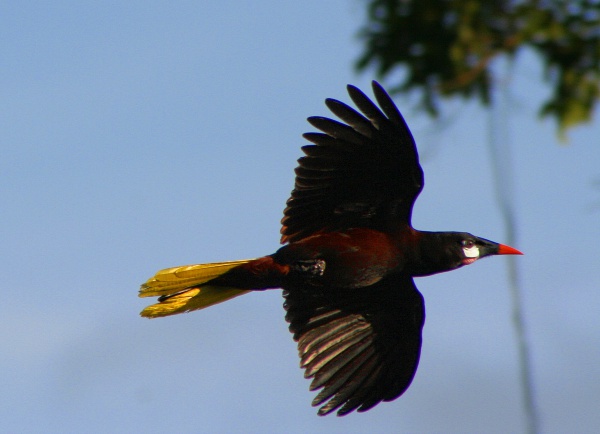Facts About Oropendola
Oropendolas are intriguing large birds native to South and Central America, belonging to the Icteridae family. They are easily identifiable by their pointed bills and long, typically bright yellow tails. Males are generally larger than females. Their plumage varies significantly, ranging from chestnut and dark brown to black, with some species exhibiting olive tones on their heads, breasts, and upper backs. Their legs are dark, and their bills often provide a striking contrast by being pale yellow or featuring red tips with green or black bases. Some species even exhibit a bare cheek patch that can be blue or pink.
These social birds prefer forested or open woodland habitats and are renowned for their colonial nesting habits, weaving intricate basket-like nests in trees. Oropendolas have a diverse diet that includes large insects and fruits. They are also highly vocal, producing a wide array of songs and calls, with some species engaging in mimicry.
The taxonomy of oropendolas is quite fascinating. They are divided into various genera. For instance, species such as the Black Oropendola, Chestnut-headed Oropendola, Russet-backed Oropendola, Dusky-green Oropendola, Green Oropendola, and Crested Oropendola belong to the genus Psarocolius. Other species, such as the Montezuma Oropendola, Baudo Oropendola, and Olive Oropendola, were previously classified under the genus Gymnostinops. Recent molecular research has revealed that some species, like the Band-tailed Oropendola and Casqued Oropendola, are more closely related to caciques and may be placed in different genera, such as Ocyalus or Clypicterus.

 Costa Rica
Costa Rica